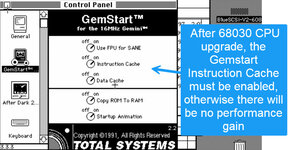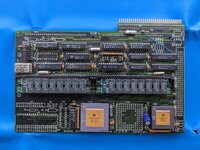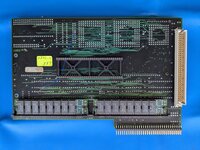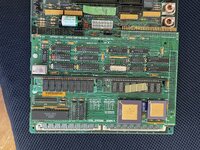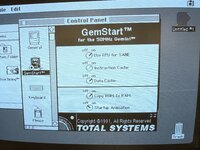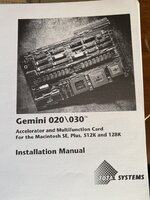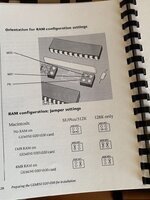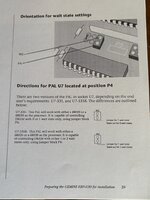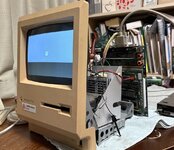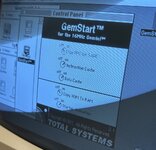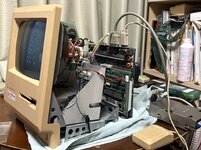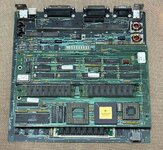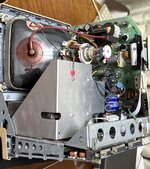I was blessed to find a Total Systems Gemini 020 for Macintosh SE (Also called the Quesse PDS accelerator for SE). These accelerators, which came out around 1988, were designed to be upgradable to the 030 and had excellent performance, besting the SE/30 and IIx in real world tests. See MacUser August 1990, page 86.
Yesterday I upgraded mine from a 68020 CPU / 68881 FPU to a 68030 CPU / 68882 FPU (25 Mhz parts). I have not yet replaced the 32 Mhz crystal oscillator, so the board is still operating at 16 Mhz. I'll update this when I try to swap in a 50 Mhz crystal oscillator, hopefully allowing the board to run at the full 25 Mhz to meet the CPU and FPU ratings. Total Systems had a 25 Mhz 030 version of the board (as referenced in the MacUser 1990 article).
Unlike many 030 accelerators for the SE, including the nice modern MacEffects Performer, the Gemini 030 at 16 Mhz gives true SE/30 performance due largely to the use of on board 70NS 4MB RAM instead of motherboard RAM.
All of these tests were done with the board installed on a Mac SE FDHD, 4 MB, BlueSCSI V2 running System 6.0.8, Gemstart 2.2 control panel, and Speedometer 3.






Yesterday I upgraded mine from a 68020 CPU / 68881 FPU to a 68030 CPU / 68882 FPU (25 Mhz parts). I have not yet replaced the 32 Mhz crystal oscillator, so the board is still operating at 16 Mhz. I'll update this when I try to swap in a 50 Mhz crystal oscillator, hopefully allowing the board to run at the full 25 Mhz to meet the CPU and FPU ratings. Total Systems had a 25 Mhz 030 version of the board (as referenced in the MacUser 1990 article).
Unlike many 030 accelerators for the SE, including the nice modern MacEffects Performer, the Gemini 030 at 16 Mhz gives true SE/30 performance due largely to the use of on board 70NS 4MB RAM instead of motherboard RAM.
All of these tests were done with the board installed on a Mac SE FDHD, 4 MB, BlueSCSI V2 running System 6.0.8, Gemstart 2.2 control panel, and Speedometer 3.
Performance increase after the upgrade (Speedometer 3): (Mac SE is 1.0)
Total Systems Gemini 030 16Mhz vs. SE/30
Total Systems Gemini 030 16Mhz vs. MacEffects Performer PDS 68030 16Mhz
Attachments
Last edited:

